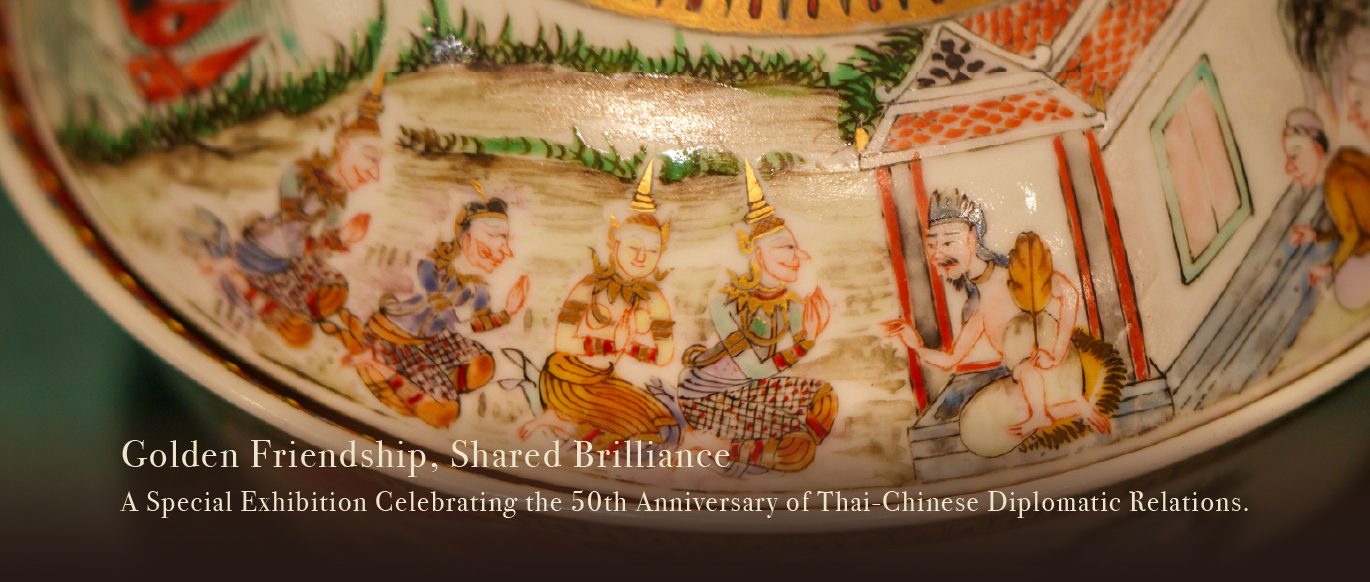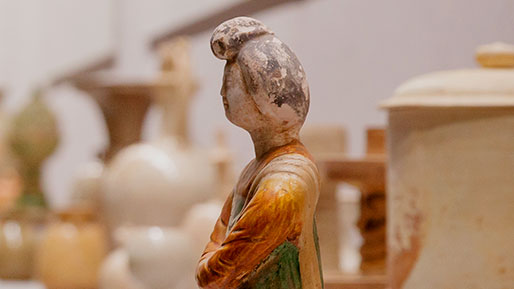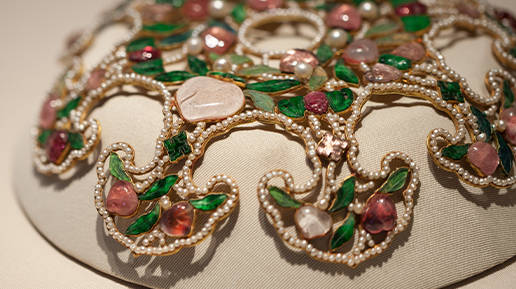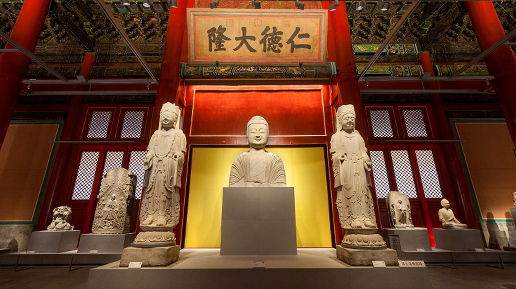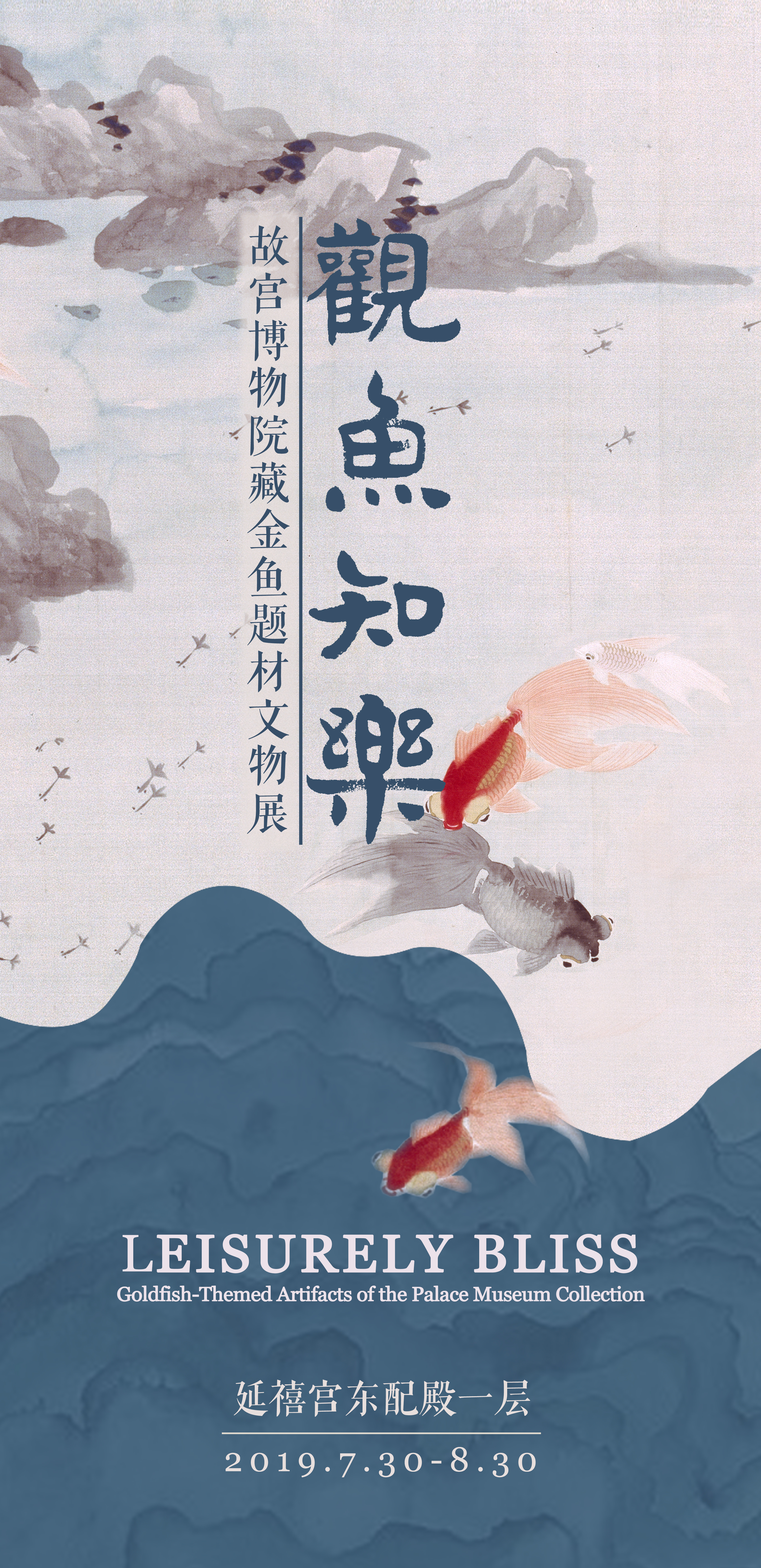
The goldfish, having evolved from the wild crucian, varies in shape and color and can often be found frolicking among aquatic plants and lotus leaves. The literati admired the great philosopher Zhuang Zhou (Zhuangzi, late-fourth century BCE), for he would become so engrossed admiring fish that he forgot all of his worries. Evidently, viewing goldfish is not only visually pleasing but also mentally refreshing.
The Chinese terms 金鱼 (jinyu, “goldfish”) and 金玉 (jinyu, “gold and jade”) are homonyms. By virtue of the homophonous association, the scene of a goldfish swimming among lotus flowers (the name of this flower being pronounced as lian or he) implies having surplus year after year (liannian youyu) and enjoying an affluent life (jinyu tonghe). When together, the goldfish and the pomegranate evoke many offspring. The goldfish also resembles a small gold seal, which when paired with wisteria signifies high position and nobility. The goldfish, a favorite theme in Chinese art, conveys people’s aspiration for a better life.
This exhibition includes goldfish-related pieces from the collection of the Palace Museum and live goldfish swimming in fish tanks. In this way, visitors may learn about the traditional Chinese goldfish culture while viewing beautiful fish.
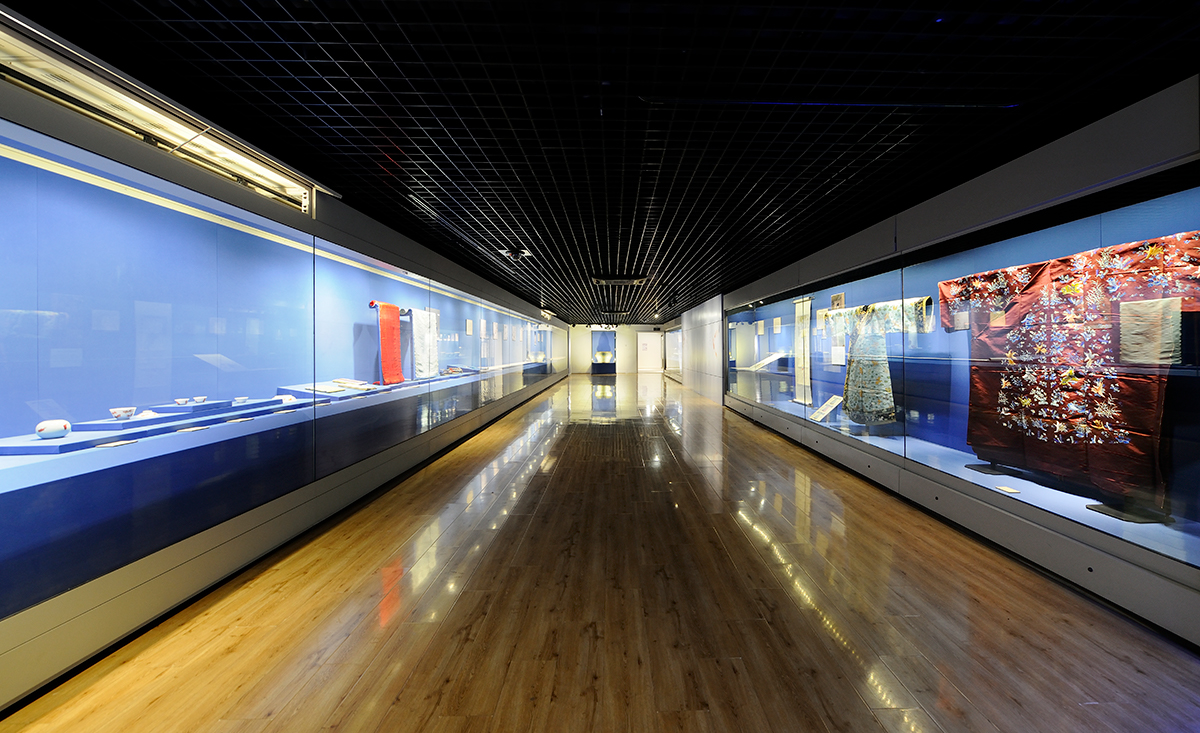
Fascinating Goldfish
The coloration and features of a goldfish may be affected by various conditions. Charming and completely devoid of mundaneness, they may swim about or, at other times, remain still in the water. The literati traditionally loved to keep goldfish for amusement and personal cultivation. The naming of a goldfish by its type reflects the literati’s unique taste. The names mirror the characteristics of each type and are full of wit and creativity.
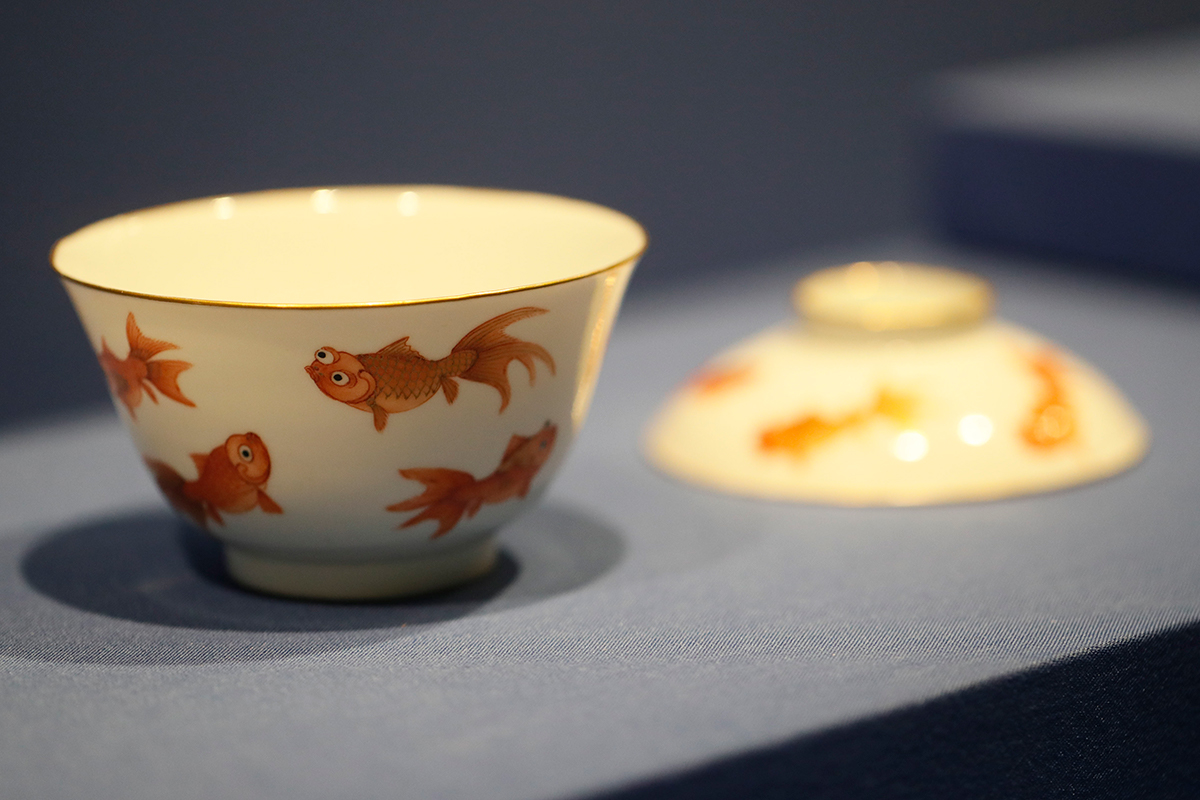
White-Glazed Lidded Cup with Iron-Red and Gold-Painted Goldfish Pattern
Qing dynasty Daoguang period (1821-1850)
Significance of the Goldfish
Because of its name and color, the goldfish is associated with the idea of welcoming everything auspicious in traditional Chinese culture. When goldfish swim through aquatic plants, they are most relaxed. Such a scene signifies an affluent life. The goldfish with a lotus flower indicates surplus year after year or enjoying great affluence. A goldfish with a pomegranate indicates many offspring. Goldfish with wisteria, together referred to as “purple tassel with a gold seal,” signifies a high position in officialdom.
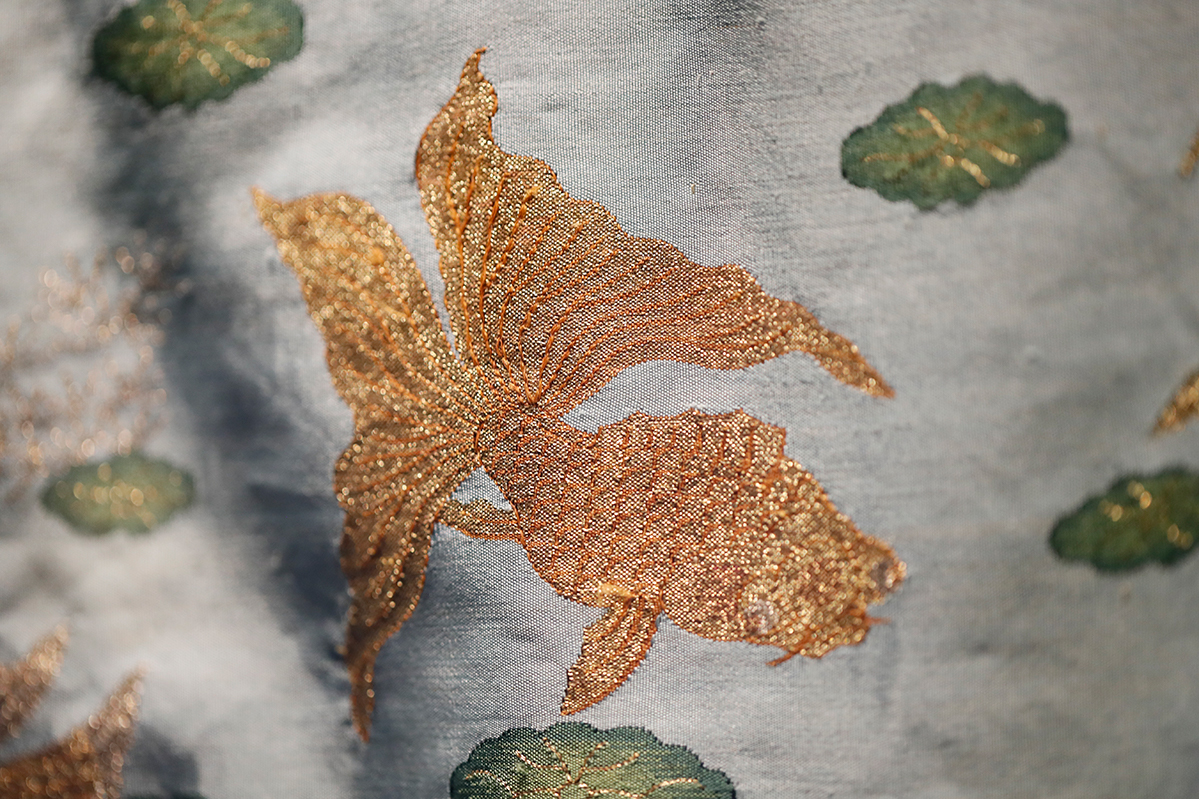
Kesi Lined Garment with Algae-and-Goldfish Pattern (detail)
Qing dynasty Guangxu period (1875-1908)
Vessels for Raising Goldfish
Goldfish are best kept in an open vessel. Raised in this way, they will grow large and healthy. The vessel should be shallow and have a wide opening so that the surface area of the water will be as large as possible and thus make more contact with the air. With the natural renewal of air in the water, the fish will have sufficient oxygen. The ancients preferred to use white porcelain vessels for goldfish since the white background offers a sharp contrast to the bright colors of the fish.
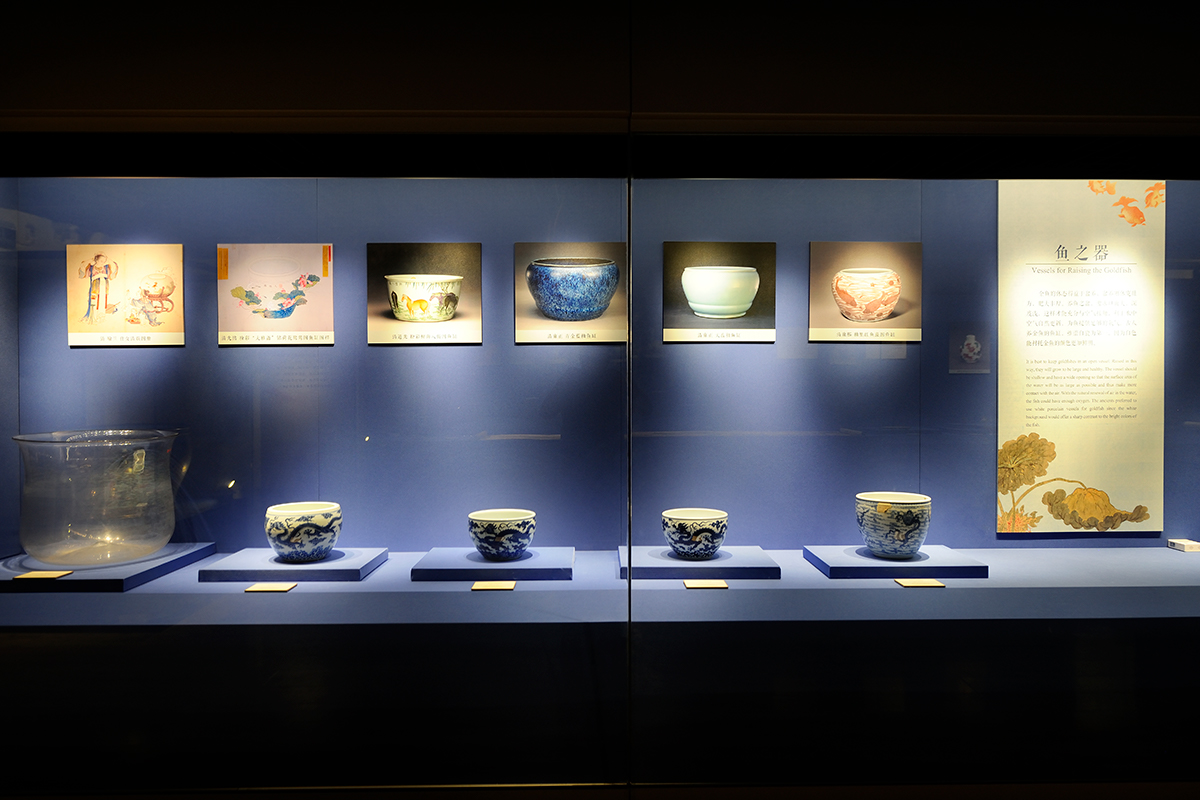
The domestication of the goldfish is among the miracles of taming wild animals. In today’s world with the advocacy of biodiversity, raising goldfish benefits scientific research and one’s mental and physical health.
Website version edited by Adam J. Ensign and Zhuang Ying




